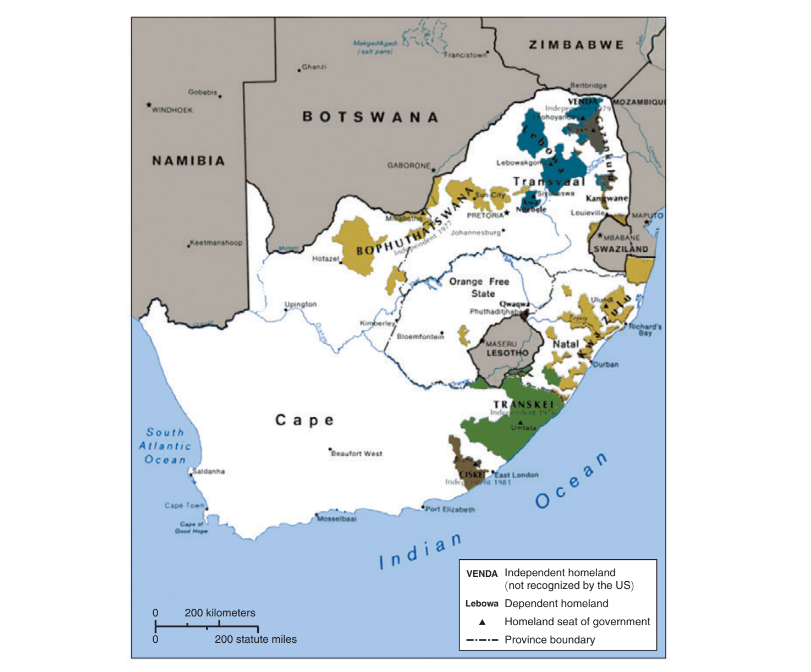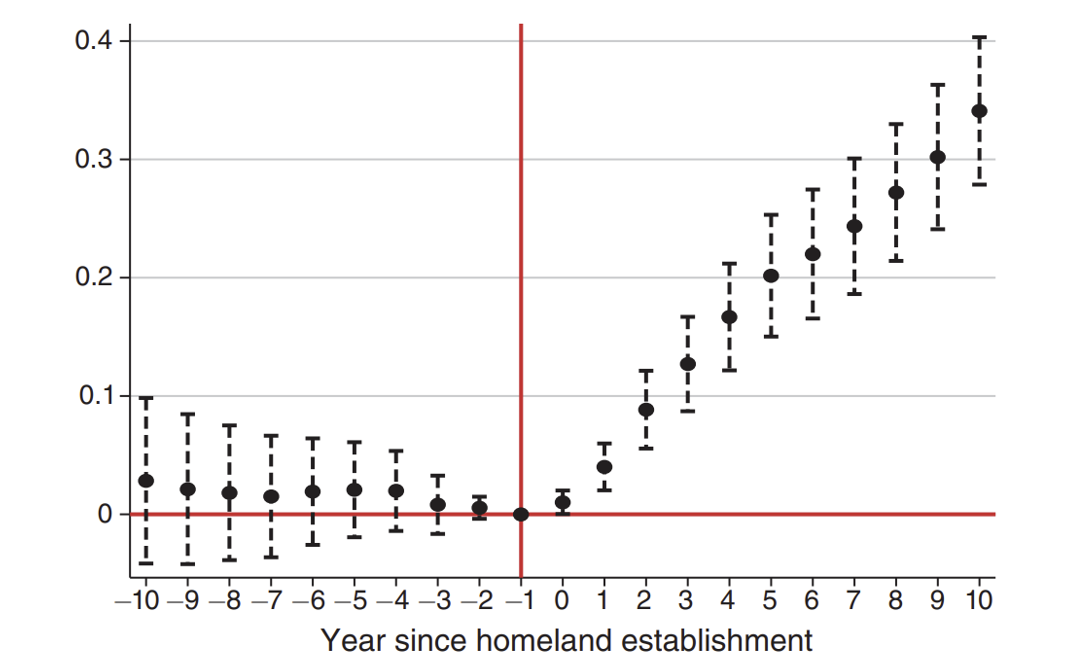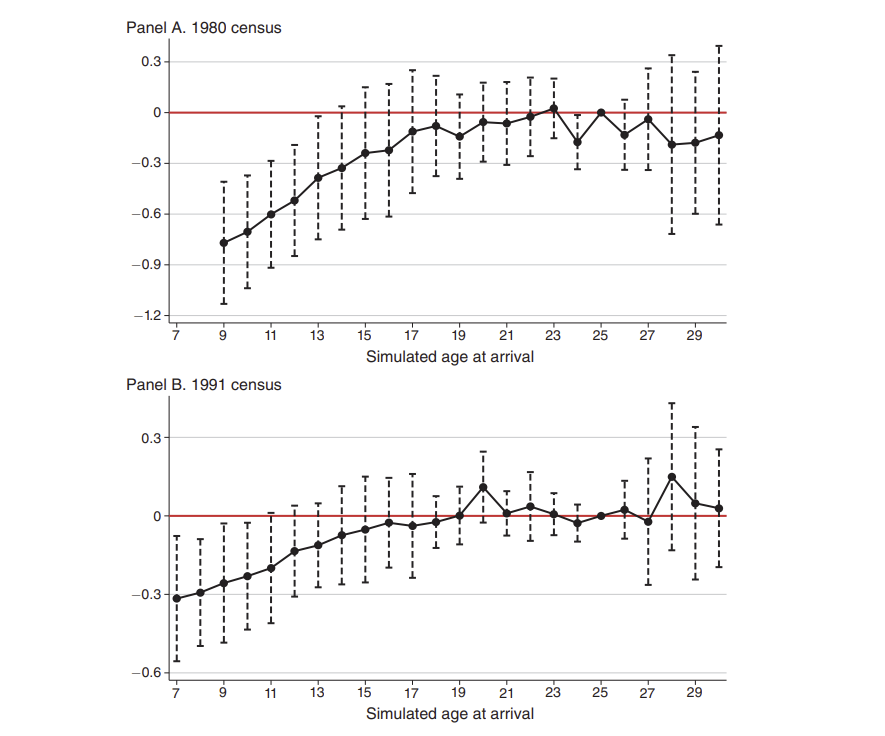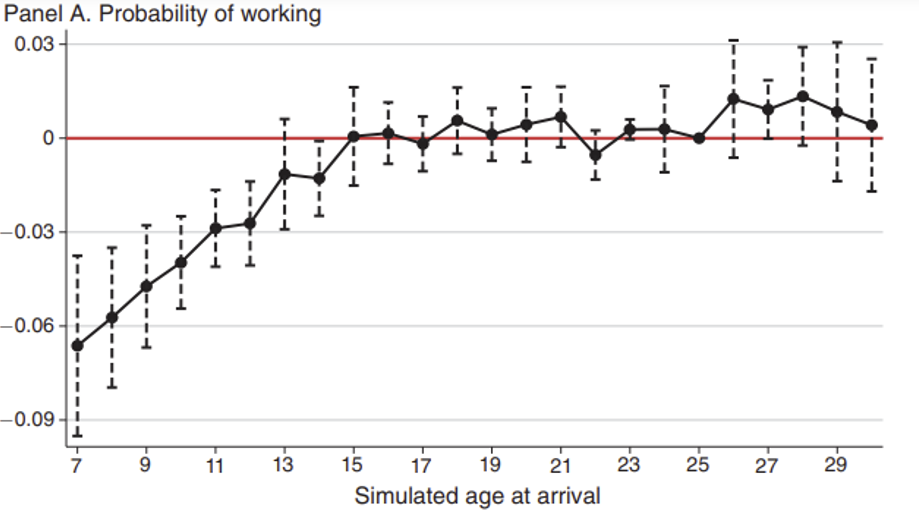
This article explores the extent to which apartheid negatively impacted educational attainment, and shows that this occurred primarily through changing early childhood environments
Under South Africa’s apartheid, several million African “Blacks”, one of the racial categories under this system of racial segregation, were forced to move and live in homeland areas separately from the White minority (Simkins 1983). Black families were suddenly uprooted from their traditional way of life and sent to distant reserves characterised by poor sanitary and physical infrastructure conditions. Many historians and other social scientists have argued that apartheid is a prime reason why South Africa is today one of the most unequal societies in the world (Clark 2014), but research quantifying its economic and social legacies remains surprisingly limited. In our recent research (Carrillo, Charris, and Iglesias 2023), we provide evidence that this relocation policy significantly reduced the educational attainment of individuals exposed at earlier ages, and explore how this had long term consequences.
The Bantu Authorities Act (1951) and Bantu Resettlement Act (1954) allowed the creation of ten homeland states. The first homelands to be formally established were Transkei, Bophuthatswana, Ciskei, and Venda, between 1959 and 1962. Over the next 15 years, the rest of the reserves were officially created. Using information on migration histories, we document that the creation of a given homeland strongly influences the timing of arrival for individuals who had previously been residing in areas designated for white people.
Figure 1: South African Homelands

Notes: Sources: Political map of South Africa 1986, Perry-Castañeda Library Map Collection, http://www.lib.utexas.edu/maps/south_africa.html, accessed July 2020
Figure 2: Effects on probability of living in a homeland

Notes: Effects of homeland establishment on timing of moving to a homeland.
Impacts on educational attainment
We use variation in the timing of homeland establishment to identify the effects of moving to the homelands on education. The basic idea is that individuals who moved to the homelands at earlier ages had more chance to be affected by the relocation policy. Using this policy-induced variation in the age at arrival in the homelands rather than the actual age at arrival (when available), we can avoid several potential selection issues that might bias our estimates. For example, some individuals may have voluntarily moved to their homelands due to other factors such as changes in preferences or specific, individual economic circumstances. Our research design circumvents these potential sources of bias and captures variation in mobility shocks that were unanticipated and over which individuals had no control.
Using this empirical strategy, we find that moving to the homelands during childhood significantly reduces educational attainment. The estimates are very precise and economically meaningful. Our preferred estimates imply that a predicted move at age nine would reduce educational attainment by about 0.55 years, or, equivalently, 11% of the sample average. These effects tend to be more pronounced for individuals with earlier predicted ages at arrival, an age profile consistent with the importance of circumstances and events during critical periods of child development.
Figure 3: Effects on educational attainment

Notes: Effects of homeland establishment on educational attainment.
Impacts on labour market outcomes
Another key question is how the homeland policy affected individuals in the labour market. Job opportunities in the homelands are limited, and many of the existing opportunities are dominated by the local government. To access these positions, particularly those that pay higher salaries, it is necessary to have some degree of formal education. Therefore, the negative impacts on schooling may be because the returns to education are negligible, and it was not worth investing in human capital acquisition. If this reasoning is correct, then income wages would be similar for all individuals irrespective of when they arrived in the homelands, and thus childhood exposure should not have later impacts on labour market outcomes.
We find that moving to the homelands in childhood led to poorer labour market outcomes in adulthood. The magnitude of the results is relatively large. Our estimates imply that individuals who potentially moved to a homeland at age seven are 6.3 percentage points less likely to work in adulthood—which represents a 21% reduction relative to the sample mean.
Figure 4: Effects on employment

Notes: Effects of homeland establishment on employment.
Our results indicate that schooling cannot account for all of the effects on labour market outcomes, which demonstrates that circumstances affecting education have independent effects on subsequent labour market outcomes, rather than simply reflecting a choice to invest less in education in response to low returns on the labour market. Other such circumstances could include, for example, changes in school quality, parental investments in general, or health deficiencies. This interpretation is consistent with recent work documenting that improvements in early-life conditions by, for example, reducing disease burdens (Bleakley 2010), increasing access to health care (Goodman-Bacon 2016), or preventing nutritional deficiencies (Adhvaryu et al. 2020) have substantial effects on labour market outcomes but smaller effects on educational attainment.
Conclusion
Our estimates show the extent to which Apartheid negatively impacted educational attainment, and that this occurred primarily through a change in an individual’s early childhood environment. We interpret the entirety of these findings as evidence on one of the channels through which the South African government’s project of apartheid had long-lasting consequences on current inequalities. Therefore, initiatives aimed at improving access to quality education, vocational training, and job opportunities within these historically affected regions are paramount to address current inequalities. These findings are likely to be relevant for other historical and contemporary episodes of governmental ethnic discrimination.
References
Adhvaryu, A, S Bednar, T Molina, Q Nguyen, and A Nyshadham (2020), “When It Rains It Pours: The Long-Run Economic Impacts of Salt Iodization in the United States.” Review of Economics and Statistics 102(2): 395–407
Bleakley, H (2010), “Malaria Eradication in the Americas: A Retrospective Analysis of Childhood Exposure.” American Economic Journal: Applied Economics 2(2): 1–45.
Carrillo, B, C Charris, and W Iglesias (2023) "Moved to poverty? a legacy of the apartheid experiment in south africa." American Economic Journal: Economic Policy 15(4): 183-221.
Clark, N L (2014), “Structured Inequality: Historical Realities of the Post-apartheid Economy.” Ufahamu: A Journal of African Studies 38(1).
Goodman-Bacon, A (2016), “The Long-Run Effects of Childhood Insurance Coverage: Medicaid Implementation, Adult Health, and Labor Market Outcomes.” NBER Working Paper 22899.
Simkins, C E W (1983), Four Essays on the Past, Present & Possible Future of the Distribution of the Black Population of South Africa. Cape Town: Southern Africa Labour and Development Research Unit, University of Cape Town.



